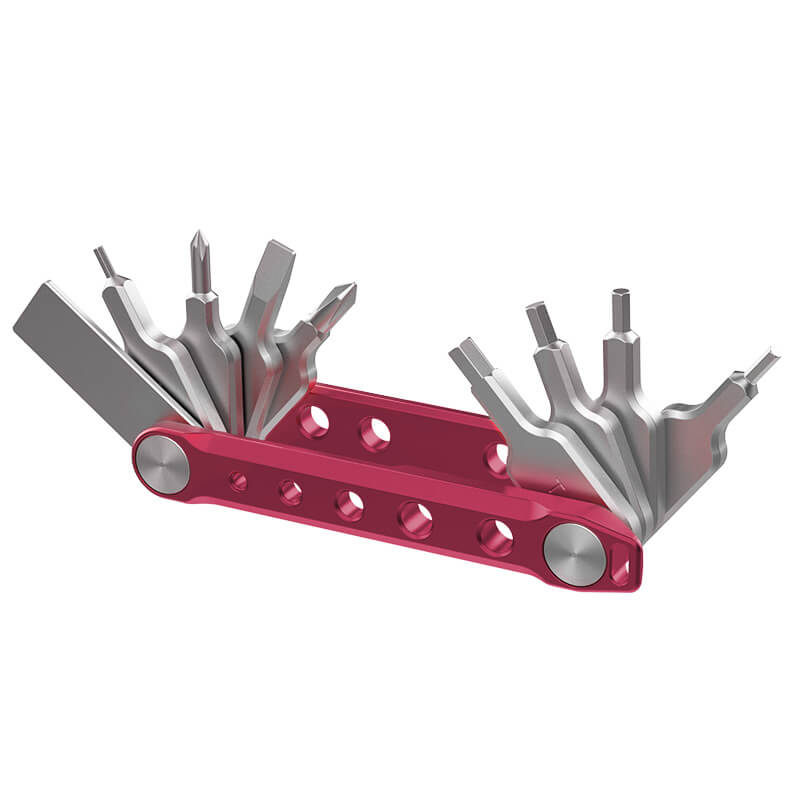The right lighting for your videos can make a big difference, and here are the Bi-color LED video lights into play. Not only are they practical, but they give you control over the mood and feel of your footage with a simple adjustment. This guide is designed to help you find the best solution for your needs without getting bogged down in the technical details. Whether this is your first step into videography or you're looking to upgrade your equipment, we'll cover the essentials and offer some tips for enhancing your videos with the right lighting.

Understanding bi-color LED technology
If you Bi-color LED video lights think, imagine the following: They're like a tiny sun and moon that you can control with a single button. Here's why they're a must-have for anyone who wants to shoot great videos:
- Two colors in one: Bi-color LEDs combine two different light colors in one device. One color evokes the warmth of candlelight, the other the coolness of a clear sky. This blend allows you to tailor your lighting to any scene.
- Flexibility without much effort: Forget lugging around different bulbs or fiddling with color filters. With bi-color LEDs, you can transform your light from a morning glow to a late afternoon hue in seconds with a simple adjustment.
- Energy efficient and cool: These lights are gentle on both your electricity bill and your environment. They consume less power and don't get as hot as traditional incandescent bulbs, allowing you to work comfortably for longer.
- Easy mixing: With just one button, you can perfectly blend warm and cool tones. Whether you want to complement the natural light from a window or balance different skin tones, these lamps are the perfect choice.
With the bi-color LED video lights you have creative control Back in your hands. They're versatile, easy to use, and perfect for ensuring your videos look consistent, whether you're shooting at midday or during the golden hour.
Factors to consider when choosing a bi-color LED video light
If you choose a bi-color LED video light you should pay attention to some important features. These determine how well the light meets your needs and how it performs in different shooting situations. Let's take a closer look at these factors:
1. Brightness and light output: This refers to how much light you can get from the fixture, usually measured in lumens or lux. A higher number means brighter light, but consider where you'll be using it. In a small room, you might not need a super-bright fixture, while larger spaces or outdoor shots will require more power.
- Lumens: This figure indicates the total amount of light emitted. Think of it as the light's power.
- Lux: It measures the brightness at a specific distance. It's useful for determining how bright the subject will be.
2. Color temperature range: The color temperature of your light influences the mood and feel of your video. Bi-color LEDs can switch between cooler and warmer colors (measured in Kelvin).
- Adaptability: A good range is between 3200K (warm, like incandescent bulbs) and 5600K (daylight). This allows you to adjust your lighting to match natural light sources or create a specific atmosphere.
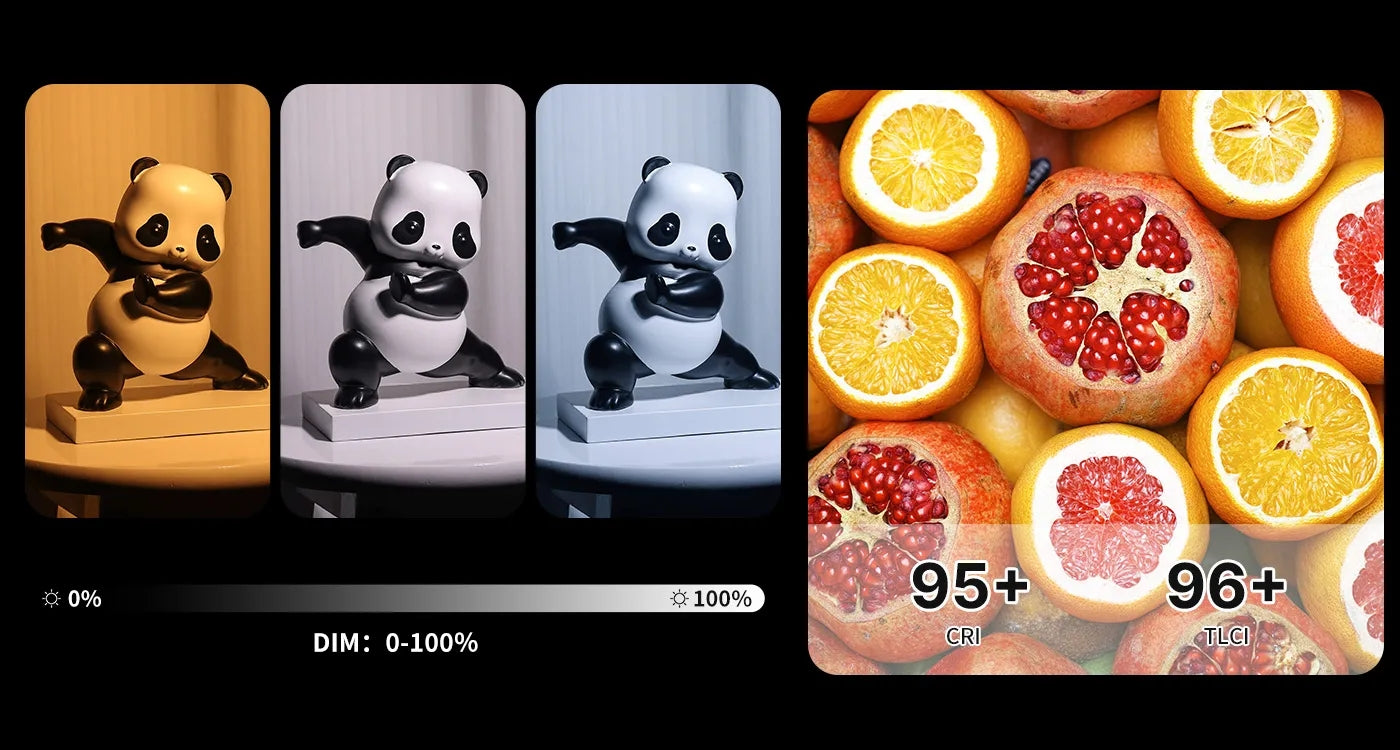
3. Color Rendering Index (CRI): High CRI values mean that colors appear true to life under your light. For video work, you should aim for a CRI of at least 95 to ensure the colors in your footage are accurate and vibrant.
4. Beam angle and coverage area: The beam angle affects how the light is distributed across the scene.
- Wide angles: They scatter the light over a larger area, which is ideal for wide shots.
- Tight angles: Useful for putting a subject in the spotlight or creating dramatic effects.
5. Power options and battery life: Some lights are powered by mains electricity, others by batteries, and some offer both. Battery life is crucial if you're working in a location without access to electrical outlets.
- AC/DC power options: Flexibility for studio and field work.
- Battery types and longevity: Check the battery life and whether the required battery type is readily available.
6. Build quality and portability:
- Material and construction: Durable materials mean your lamp can withstand the rigors of travel and frequent use.
- Size and weight: When you're on the go, lighter and more compact lights are the best choice because they can be set up and taken down quickly and easily.
By considering these factors, you'll be well on your way to finding a bi-color LED video light that meets all your video production needs. Whether you're shooting a documentary, live streaming on social media, or producing commercials, the right light can make your job easier and your final product look better.
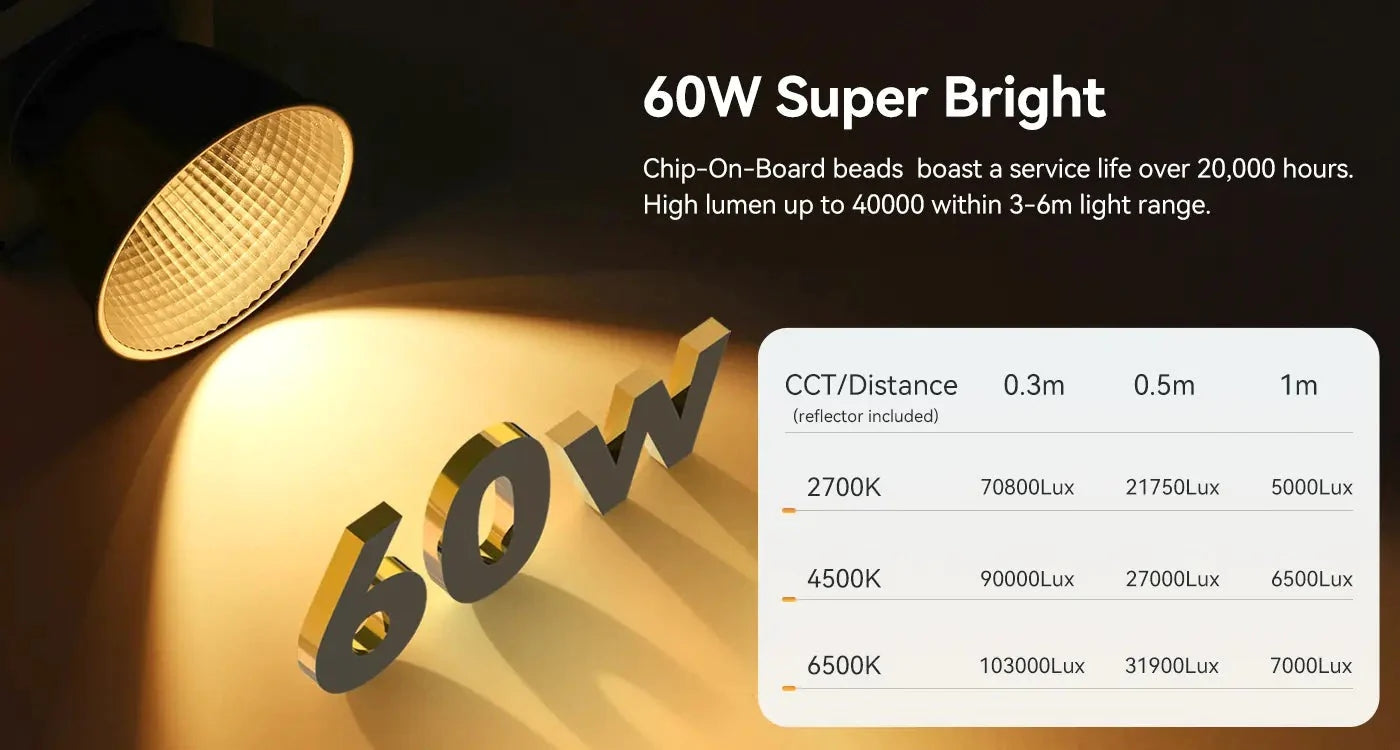
Accessories and modifiers for bi-color LED video lights
To get the most out of your Bi-Color LED video light, you should use it with the right accessories and combine modifiers to take your lighting to the next level. Here's a look at some additional devices that will help you perfectly adjust your light:
- Softboxes and diffusers: They soften the light from your LEDs. They spread the light over a wider area, reducing harsh shadows and creating an even, soft light on your subjects. Ideal for interviews or portraits.
- Grids and barn doors: These tools help you shape and direct the light. Grilles focus the light into a tighter beam, giving you more control over where it falls. Barn doors are adjustable flaps around the light that prevent the light from shining into areas you don't want illuminated.
- Mounting options: Versatile mounting options allow you to install your light almost anywhere. Look for lights that can be mounted in a variety of ways, whether with a simple stand, clamping to various surfaces, or hanging from the ceiling—flexibility is key.
- Carrying bags for portability: When moving from one place to another, a sturdy carrying bag is essential.It protects your equipment and facilitates the safe transport of lamps, batteries and accessories.
While accessories can offer more control and creative possibilities, they also mean additional costs. Consider which accessories are truly beneficial for your work, and Improve your lighting setup depending on the type of videos you produceWith the right modifiers, you can transform a simple lighting setup into a professional rig suitable for a variety of shooting situations.
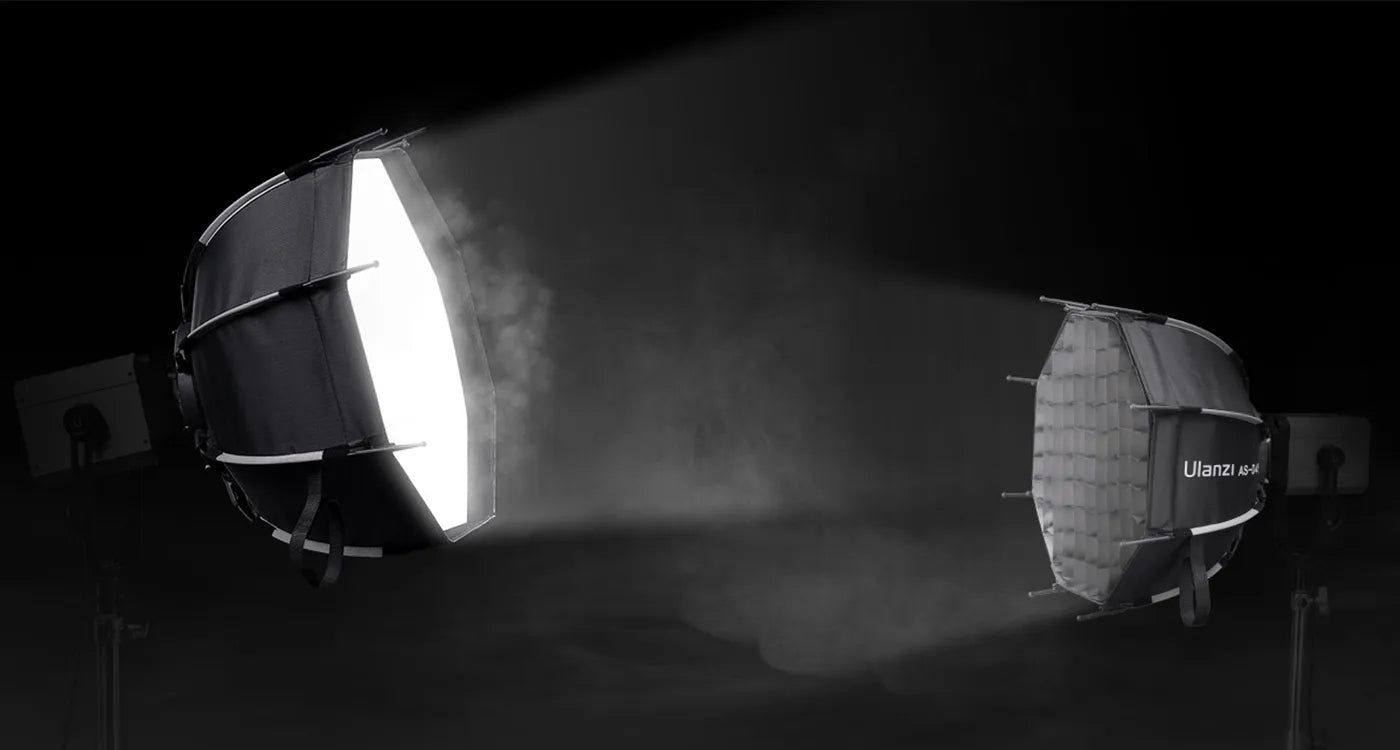
Practical tips for using bi-color LED video light
So, you've decided on a bi-color LED video light, or maybe you're just about to. How do you get the most out of it? Here are some practical tips that can help you light your scenes like a pro:
- Start with white balance: Before you start shooting, adjust the white balance on your camera to match the color temperature of your LED light. This simple step ensures that the white colors look white and all other colors are in the correct place.
- Mix it: Don't be afraid to blend natural light with your LED lighting for a more dynamic scene. Play with your fixture's color temperature settings to complement the ambient light in your location.
- Lighting angles are important: Move your light and try different angles. Sometimes the best view comes from an unexpected position. Side lighting, backlighting—every angle tells a different story.
- Spread your light: If you see harsh shadows or the light seems too intense, use diffusers. They help distribute the light more evenly and give your shots a softer, more professional look.
- Battery backup: When filming away from power sources, always have spare batteries or a charged portable battery pack on hand. Nothing spoils the mood like having to interrupt filming because of a power outage.
- Safety first: Even though LEDs don't get as hot as traditional bulbs, you should ensure good ventilation. Keep them away from flammable materials and make sure they're secured to prevent accidents.
While equipment is important, technique makes the difference. Experiment with your bi-color LED light, learn how its features work in different environments, and you'll see your video quality shine. Keep practicing, and you'll learn something new with every shot!
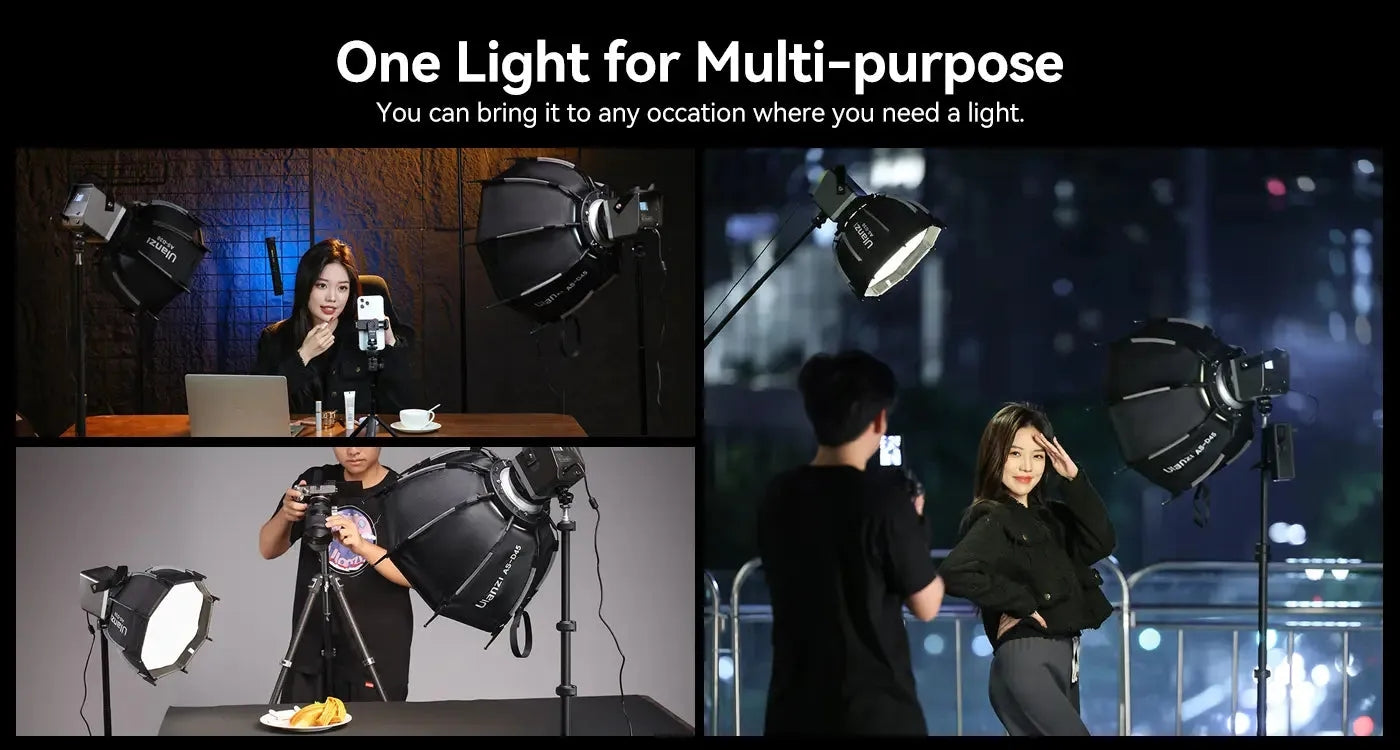
How to care for your bi-color LED video lights
Caring for your bi-color LED video lights isn't just about extending their lifespan, it's also about ensuring they perform at their best on every shoot. Here are some simple maintenance tips:
- Regular cleaning: Keep your lights dust-free. Gently wipe the surface with a soft, dry cloth to prevent buildup that can impair performance. For more stubborn dirt, you can use a slightly damp cloth with a little mild soap, but be careful not to allow moisture to penetrate the electronics.
- Check the cables: Check the power cord and plug for signs of wear or damage before and after use. A frayed cord is not only unsafe, but could leave you in the dark at a crucial moment.
- Update firmware: If your light has software, keep it up to date. Manufacturers may release updates to improve functionality or fix bugs, which can improve the performance and longevity of your light.
- Store properly: When not in use, store your lamps in a cool, dry place. If you have a carrying case or protective bag, use it. These are not only designed for transport but also protect your lamps from dust and accidental impacts.
- Treat them with care: Treat your lamps like any other valuable piece of equipment. Don't drop or knock them over. Even sturdy devices can be damaged by rough handling.
- Battery care: For models with rechargeable batteries, ensure proper charging practices. Avoid leaving fully charged batteries on the charger and try to keep them at moderate temperatures to extend their lifespan.
With these simple habits, your bi-color LED video lights will be ready to use at any time, providing reliable and consistent lighting for all your video projects.
Troubleshooting common problems with bi-color LED video lights
Even the best equipment can occasionally experience problems. Here's how to resolve some common issues with your bi-color LED video lights:
- Flickering light: If your light starts flickering, first check the power source. Loose connections or weak batteries are often the culprits. Secure all cables and make sure the batteries are sufficiently charged.
- Uneven color temperature: If the color temperature appears uneven, it could be a sign that a group of LEDs is dimming. This can happen as the lamp ages. In this case, you should contact the manufacturer to request a replacement, if the warranty is still valid, or consider purchasing a new one.
- Reduced brightness: Over time, LED lights can lose their brightness. Make sure there's no dust or dirt on the lens that could block the light. If there isn't, the LEDs may be nearing the end of their life cycle.
- Unresponsive controls: If the dials or remote control aren't responding, it's time for some basic troubleshooting. Check for dead batteries in the remote control, make sure the light's firmware is updated, and look for obvious signs of damage to the control mechanisms.
- Overheating: While LED lights overheat, it can still happen, especially when used in hot environments for extended periods. If your light overheats, turn it off and allow it to cool before continuing.
By learning how to quickly diagnose and fix these common problems, you will minimize downtime and extend the life of your LED video lights.It's also a good idea to familiarize yourself with the manufacturer's warranty and support services so you know exactly what steps to take if you encounter a problem that you can't fix yourself.
How to maximize the lifespan of your bi-color LED video lights
Investing in a bi-color LED video light is just the first step. To get the most out of your investment, you need to take steps to extend its lifespan. Here's how to keep your lighting shining brightly for years to come:
- Avoid overloading: Follow the manufacturer's usage recommendations. Overloading the LEDs with too much current to achieve greater brightness may shorten their lifespan.
- Correct switching on and off: Turning your lights on and off properly can help reduce wear and tear. Wait a few seconds after turning them off before turning them back on. This gives the internal components time to cool down and reset.
- Keep an eye on the heat exposure: Although LED lights run cooler than traditional incandescent bulbs, prolonged exposure to high temperatures can damage them. Keep them away from hot lamps or direct sunlight for extended periods.
- Use surge protection devices: Power surges can damage electronic devices. Using surge protectors can protect your lights from unexpected voltage spikes.
- Be careful when transporting: When transporting your lamps, especially when traveling to another location, pack them securely. Use padded bags to protect them from bumps and drops that can cause internal damage.
- Keep the firmware up to date: As with all technical devices, it is important to keep the firmware up to date to ensure that any bugs or glitches are fixed and to avoid software issues that could indirectly affect the performance of the hardware.
Following these guidelines will not only extend the lifespan of your bi-color LED video lights, but also ensure they continue to perform at their best. Remember, regular maintenance and careful handling are key to getting the most out of your lighting equipment.
Shine a light on your video mastery
In summary, choosing the ideal bi-color LED video light comes down to what works for you—your budget, your style, and your video needs. It's less about fancy features or high prices and more about the practical magic you create on screen. With the right light in your toolbox and a sense of experimentation, you'll be well-equipped to banish the shadows and capture compelling shots. This way, you can make every shot shine—smoothly, cost-effectively, and exactly the way you envisioned it.
FAQs about LED video light
Q1: Can I operate my bi-color LED light with batteries?
Many bi-color LED lights are battery-powered, making them portable and convenient for on-location shooting. Always check the specifications to see if the device is battery-compatible and what type of batteries it requires.
Q2: Do I always need to use a diffuser for my LED light?
Not always, but diffusers can help soften the light, reduce harsh shadows, and create more flattering lighting for your subjects. It depends on the look you're trying to achieve with your video.
Q3: Are bi-color LED lights suitable for both photography and videography?
Absolutely! Bi-color LED lights are a great tool for photographers who need continuous lighting for still photography, especially for portrait or product photography.
Q4: Can I leave my LED light on for an extended period of time or will it overheat?
LED lights generate less heat than traditional bulbs and are therefore less prone to overheating. However, it's still advisable to turn them off when not in use to extend their lifespan and for safety reasons.
Q5: What should I do if my light starts flickering or changes color unexpectedly?
First, check your power source and connections to make sure everything is secure. If the problem persists, consult the manufacturer's troubleshooting guide or contact customer service. Flickering or unexpected color changes may indicate a hardware issue that requires professional repair or replacement.
Q6: Why is a high CRI (Color Rendering Index) of 95+ important?
A high CRI value of 95+ indicates that the light accurately reproduces colors, which is crucial for capturing the true colors of your subject. This level of color fidelity minimizes the need for color correction in post-production, saving you time and preserving the natural beauty of your shot.






